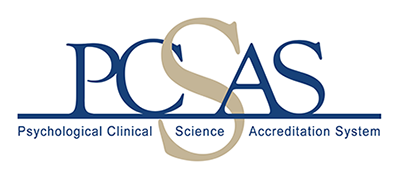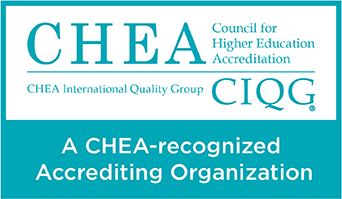By Anamiguel Pomales Ramos, M.A., Michigan State University
As psychosocial interventions are implemented and disseminated in the community, there have been growing concerns about the perceived fit and generalizability of evidence-based practices to racial-ethnic minoritized groups. Interventions for children and adolescents have been predominantly developed and tested with non-Latine, white samples living in well-resourced communities. The underrepresentation of people of color in the development and evaluation of interventions results in a knowledge gap of important and unique factors and mechanisms of change that could contribute to acceptance, engagement, and positive treatment outcomes.
Over the past decade, laudable efforts have been made to increase the evidence base of psychosocial interventions for racial and ethnic minoritized youth (Pina, Polo, & Huey, 2019; Park et al., 2022). Researchers have relied on several approaches to design culturally informed interventions, such as using cultural frameworks to guide the adaptation of existing interventions (Arora et al., 2021; Bernal et al., 1995), designing culturally-derived interventions for specific groups (Magaña, Lopez, & Machalicek, 2017), and identifying common elements of incorporating culture into interventions that can be applied to a broader range of services (Park et al., 2022).
In terms of the content, researchers have made adaptations to how the intervention is delivered (i.e., surface adaptations) and to the key components and mechanisms of the intervention (i.e., deep adaptations). Arora and colleagues (2021) noted that the most common components adapted included translations, culturally relevant examples, incorporating values and traditions, and matching therapist-client demographics. Additionally, they noted that the most frequently used framework to guide cultural adaptations is the Ecological Validity Model, which aims to increase the ecological and external validity of interventions by addressing eight dimensions of culture (language, persons, metaphors, content, concepts, goals, methods, and context; Bernal et al., 1995).
Studies examining the effectiveness of these interventions have yielded mixed findings. While some studies have shown that culturally adapted interventions outperform unadapted interventions (Arora et al., 2021), others have demonstrated the effectiveness of unadapted interventions in racial-ethnic minoritized groups (Park et al., 2022). In a recent systematic review of randomized controlled trials (RCT) testing interventions with youth of color, Park and colleagues (2022) noted that the treatment group in less than half of the identified culturally adapted interventions outperformed comparison groups. Despite the mixed findings, these studies show the value of testing interventions with racial-ethnic minoritized participants to potentially inform youth-level and family-level factors and mechanisms of change that optimize intervention effectiveness for diverse groups.
These findings also highlight some limitations and concerns of cultural adaptations more broadly. There is currently significant variation in the terminology and descriptions of cultural adaptations and the development of culturally-derived practices. This limits our understanding of what adaptations were made, for what reasons, and under what context. As reporting standards are developed for the field, researchers should provide detailed and clear descriptions on adaptations and intervention development. Reporting on what adaptations were made, for what reasons, and under what context can facilitate future implementation of the intervention in clinical settings and replication studies.
Another limitation is that some racial-ethnic minoritized groups are largely underrepresented in this literature, with only 2 interventions predominantly tested with Asian youth, 2 with Native American or Alaska Native youth, and 0 with Native Hawaiian or other Pacific Islander youth (Park et al., 2022). Researchers should continue making a significant effort to recruit diverse participants and report on multiple demographic variables.
Lastly, there is significant heterogeneity within racial-ethnic minoritized groups. Therefore, culturally adapted/derived interventions may not address or fit all the needs of the individuals in a minoritized group. Given the heterogeneity within groups, clinicians working with minoritized clients should assess multiple dimensions of cultural identity during the clinical formulation stage and collaborate with families and youth in setting goals that work best for their needs (e.g., using the Wright-Constantine Structured Cultural Interview, 2023). Some researchers have suggested applying an individualized approach (e.g., adaptive interventions) in which there are guidelines for when and how to make adaptations may be a potential solution (Arora et al., 2021). This requires that the professional selecting, adapting, and evaluating interventions meet a high standard of cultural competence. For example, researchers and clinicians working with youth of color should be well informed on the validity of evidence-based practices with different populations to more effectively evaluate and select measures and interventions (e.g., Pina et al., 2019 provide a list of well-established interventions for racial-ethnic minoritized youth).
Culturally adapted/informed interventions are still largely understudied. There is still much progress to be made to address key questions regarding factors and mechanisms of change that optimize engagement and outcomes for racial-ethnic minoritized youth and their families.
_______________________________________________________
References
Arora, P. G., Parr, K. M., Khoo, O., Lim, K., Coriano, V., & Baker, C. N. (2021). Cultural adaptations to youth mental health interventions: A systematic review. Journal of Child and Family Studies, 30(10), 2539-2562.
Bernal, G., Bonilla, J., & Bellido, C. (1995). Ecological validity and cultural sensitivity for outcome research: Issues for the cultural adaptation and development of psychosocial treatments with Hispanics. Journal of abnormal child psychology, 23(1), 67-82.
Magaña, S., Lopez, K., & Machalicek, W. (2017). Parents taking action: A psycho‐educational intervention for Latino parents of children with autism spectrum disorder. Family process, 56(1), 59-74.
Park, A. L., Rith-Najarian, L. R., Saifan, D., Gellatly, R., Huey, S. J., & Chorpita, B. F. (2022). Strategies for incorporating culture into psychosocial interventions for youth of color. Evidence-Based Practice in Child and Adolescent Mental Health, 1-13.
Pina, A. A., Polo, A. J., & Huey, S. J. (2019). Evidence-based psychosocial interventions for ethnic minority youth: The 10-year update. Journal of Clinical Child & Adolescent Psychology, 48(2), 179-202.
Wright, A. J., Vardanian, M. M., & Constantine, K. (2023). The Wright-Constantine Structured Cultural Interview and Integration of Culture Into Case Conceptualization. The Counseling Psychologist, 51(1), 36-61.
Disclaimer: The views and opinions expressed in this newsletter are those of the authors alone and do not necessarily reflect the official policy or position of the Psychological Clinical Science Accreditation System (PCSAS).


